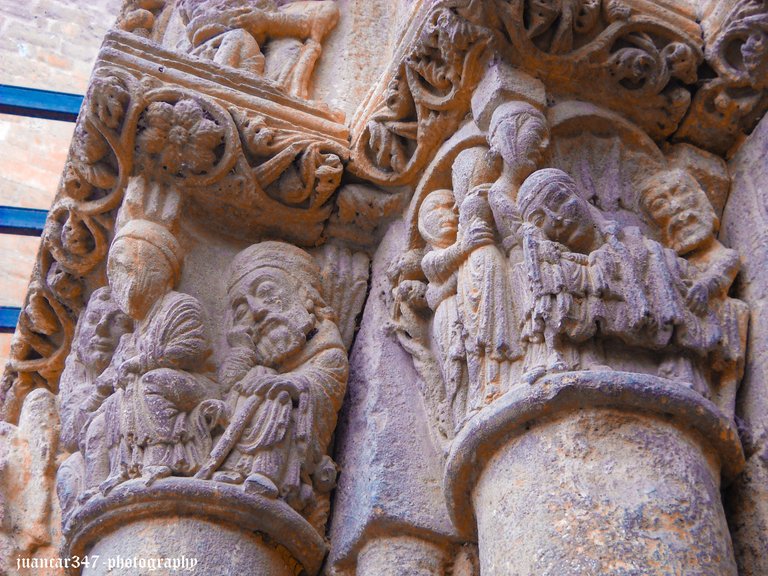
For some reason that has never been sufficiently explained and is therefore subject to the demand of all kinds of speculations, to Aymeric Picaud, the chronicler and author of the first guide to that set of itineraries and mysterious keys, which is There is no doubt that the Saint James Way could be considered the first anti-Navarrean route in history. And yet, Navarra, since the times of Picaud and his low qualifications, continues to be a fertile, beautiful and unique land, subtly rich in Historical, Artistic and Cultural Heritage, which, of course, leaves no one indifferent. This becomes much more evident, even, if possible, in legendary cities, which, like Estella, over the centuries continue to preserve mysterious keys, which attract considerable attention, not only for the beauty of the architecture, the Romanesque, which was, of course, lavish in this land of bread and wine, as if by the intrinsic magnetism that emerges from a sculpture, in whose traces one could guess the powerful force of hands, anonymous and masterful, who had already left the quality before of its mark, in places like Jaca, Huesca or the Five Villages of Aragon.
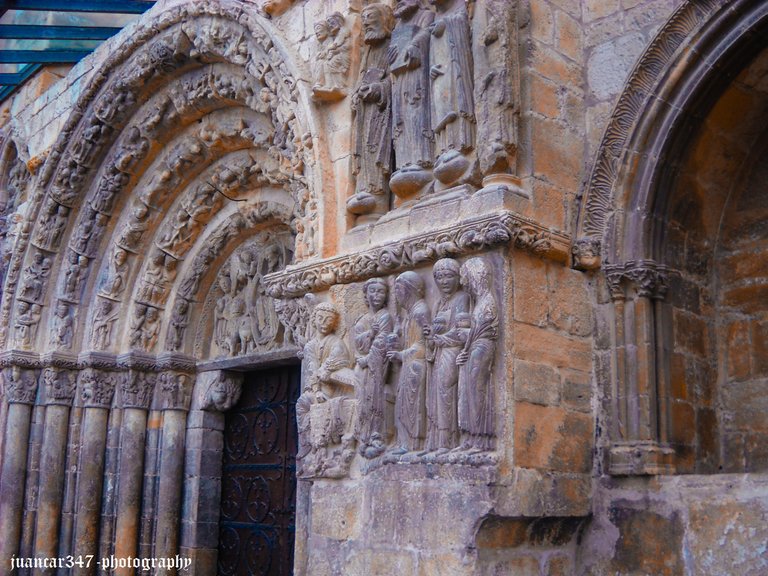
This becomes more evident, in any case, if, moving away from the media singularities of the urban center of the city, with the legendary references to the epic combat between Roland and the giant Ferragut, recorded in the unique Palace of the Kings of Navarra, under the attentive surveillance of that other landmark for the pilgrim, which is the church of San Pedro de la Rúa, we ascend, tiringly, towards the upper part of the city and we stop in front of that exquisite poem in stone, which, no matter what Without a doubt, it is the magnificent façade of the church of Saint Michael. A cover, in front of whose surprising vision, it would not be difficult for us, at all, to put ourselves for a moment in the skin of that cabalistic knight of La Mancha, Don Quixote, and see, through that subtle veil that separates the border from the objectivity of that other fantasy land, which is the metaphor, giants, who, adopting the position of the mythological Sphinx, challenge us to face the cultural combat of deciphering what is really hidden behind each of its innumerable details.
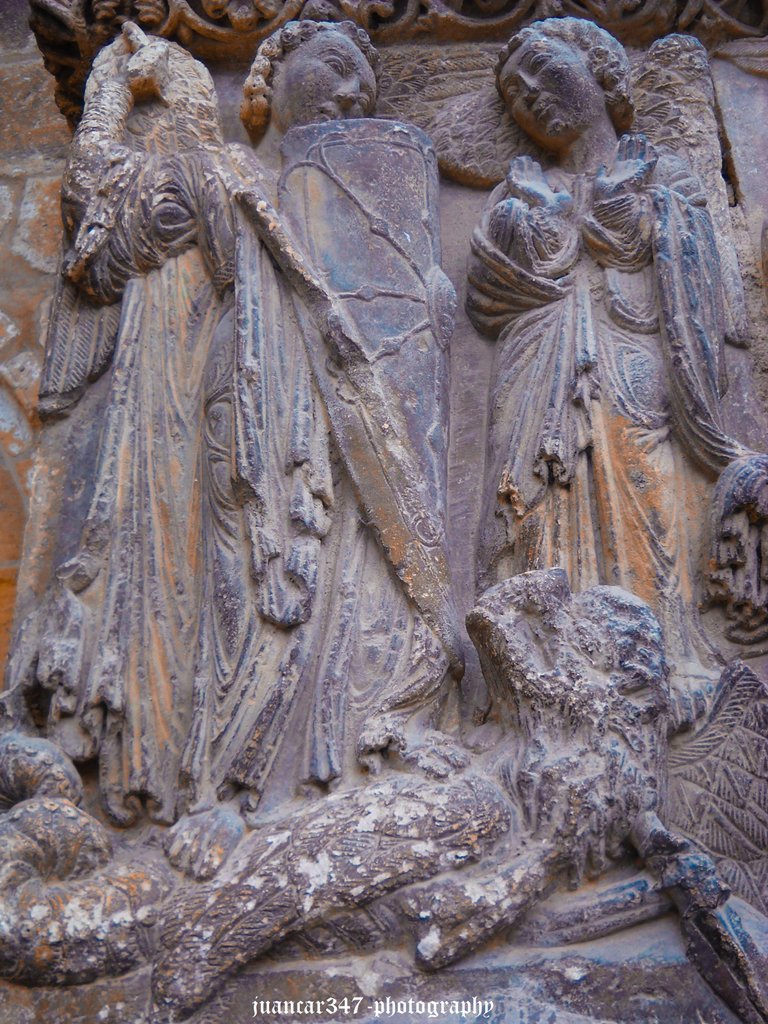
Por alguna razón que no ha sido nunca lo suficientemente explicada y por lo tanto, queda sujeta a la demanda de todo tipo de especulaciones, a Aymeric Picaud, el cronista y autor de la primera guía de ese conjunto de itinerarios y claves mistéricas, que es, no cabe duda, el Camino de Santiago, se le podría considerar como el primer anti navarro de la Historia. Y, sin embargo, Navarra, desde los tiempos de Picaud y sus bajas calificaciones, continúa siendo una tierra fértil, hermosa y singular, sutilmente rica en un Patrimonio Histórico, Artístico y Cultural, que, desde luego, no deja a nadie indiferente. Esto se hace mucho más patente, aun, si cabe, en legendarias ciudades, que, como Estella, al cabo de los siglos continúan conservando unas claves mistéricas, que atraen considerablemente la atención, no sólo por la belleza de una arquitectura, la Románica, que fue, desde luego, pródiga en esta tierra de pan y vino, como por el magnetismo intrínseco que se desprende de una escultura, en cuyas trazas se podría adivinar la poderosa fuerza de unas manos, anónimas y magistrales, que ya dejaron antes la calidad de su huella, en lugares como Jaca, Huesca o las Cinco Villas aragonesas.
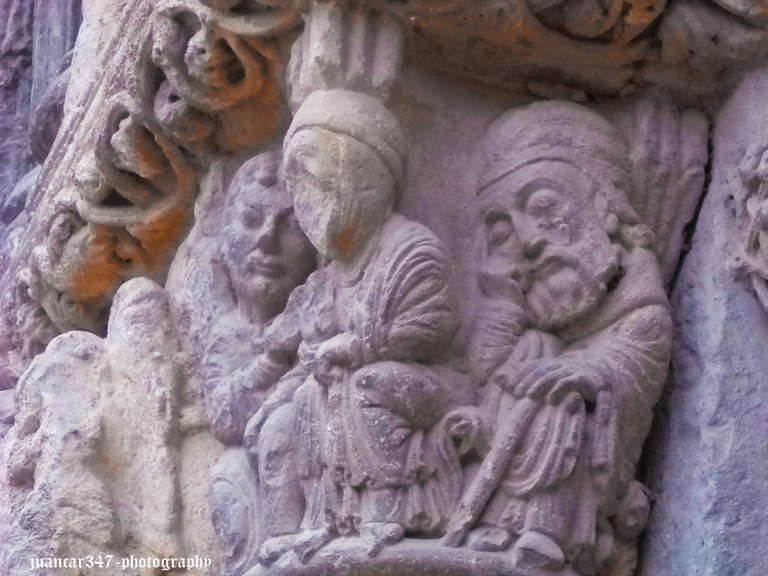
Esto se hace más patente, de cualquier manera, si, alejándonos de las mediáticas singularidades del centro urbano de la ciudad, con las legendarias referencias al épico combate entre Roldán y el gigante Ferragut, consignado en el singular Palacio de los Reyes de Navarra, bajo la atenta vigilancia de ese otro hito para el peregrino, que es la iglesia de San Pedro de la Rúa, ascendemos, fatigosamente, hacia la parte alta de la ciudad y nos detenemos frente a ese exquisito poema en piedra, que, no les quepa ninguna duda, es la magnífica portada de la iglesia de San Miguel. Una portada, frente a cuya sorprendente visión, no nos sería difícil, en absoluto, meternos por un momento en la piel de aquél cabalístico caballero de la Mancha, Don Quijote, y ver, a través de ese sutil velo que separa la frontera de la objetividad de esa otra tierra de fantasía, que es la metáfora, gigantes, que, adoptando la posición de la mitológica Esfinge, nos retan a enfrentar el combate cultural de descifrar lo que realmente se oculta detrás de cada uno de sus innumerables detalles.
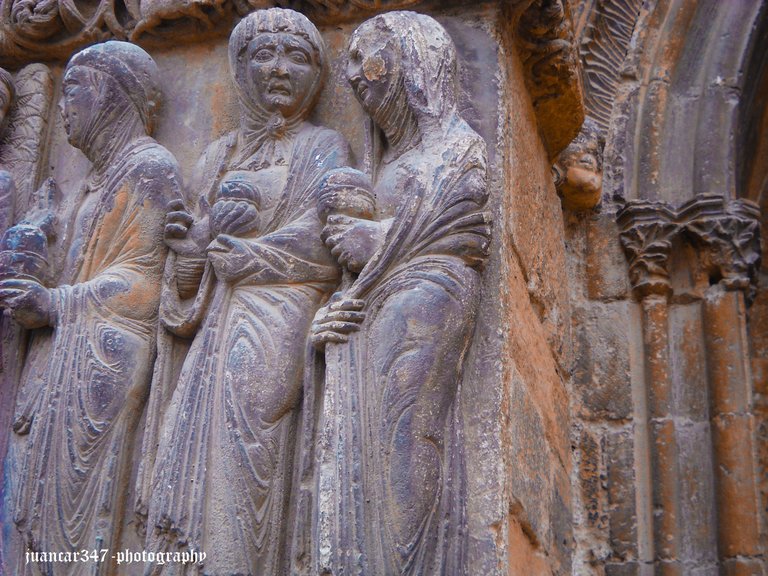
NOTICE: Both the text and the accompanying photographs are my exclusive intellectual property and are therefore subject to my Copyright.
AVISO: Tanto el texto, como las fotografías que lo acompañan, son de mi exclusiva propiedad intelectual y por lo tanto, están sujetos a mis Derechos de Autor.
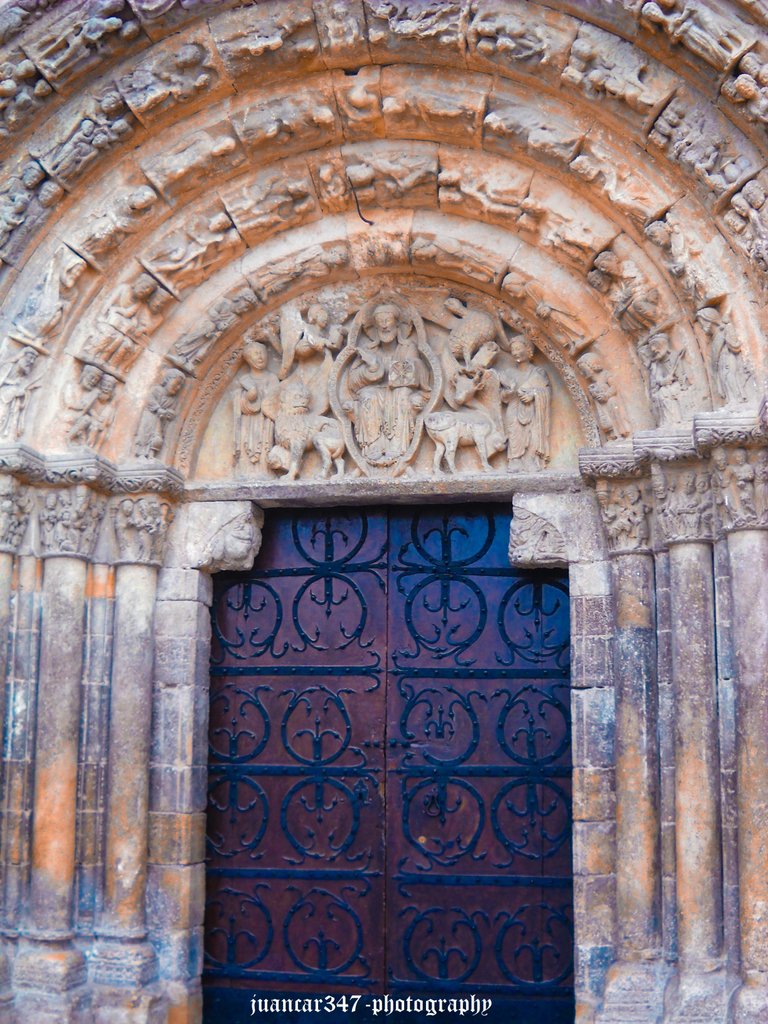
On top of that, it is not possible for every human being to make such beautiful designs and shapes. Those who are artists take a lot of time and work hard, then they get this skill and then they create such beautiful things for us people. They make them and then use them to build houses or in such beautiful places.
TRUE. In this case, in addition, a very particular detail must be taken into account: the stone was very expensive, therefore, the stonemason had to be very careful in his work, because if he broke it, it would be deducted from his salary. That also contributed to making them especially skilled.
Yeah you are right.
#hive #posh
The people who are usually drawn on the wall, are they always legends or just commoners?
They are part of certain religious beliefs. Like any others that are represented in temples of other religions throughout the world.
Hello juancar347!
It's nice to let you know that your article will take 14th place.
Your post is among 15 Best articles voted 7 days ago by the @hive-lu | King Lucoin Curator by peter.goki
You receive 🎖 0.3 unique LUBEST tokens as a reward. You can support Lu world and your curator, then he and you will receive 10x more of the winning token. There is a buyout offer waiting for him on the stock exchange. All you need to do is reblog Daily Report 287 with your winnings.
Buy Lu on the Hive-Engine exchange | World of Lu created by szejq
STOPor to resume write a wordSTARTThank-you
💖
Llena de detalles hermosos, sin duda alguna @juancar347 siempre atrayente los espacios que nos compartes. Un abrazo.
!PIZZA
Muchas gracias
$PIZZA slices delivered:
@sacra97(2/15) tipped @juancar347
Thank-you
Ya se templa aquí la barra
De verdad o fantasía
De todo aquel que se iría
Por los predios de Navarra.
Me décima así lo narra
Con gigantes y Roldán
Para ti mis versos van
Con mi chistera de mago
Aplaudirte es lo que hago
Cuando los versos se dan.
La Juglaría, mi querido pana, forma parte también de la magia de los caminos y de una transmisión cultural, que, a pesar del tiempo y las modas, sigue afortunadamente resistiendo. Felicidades, juglar.